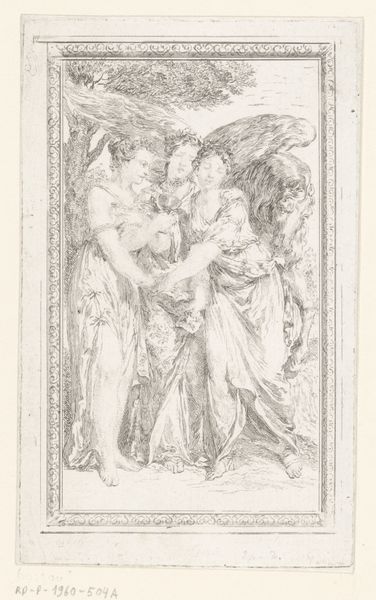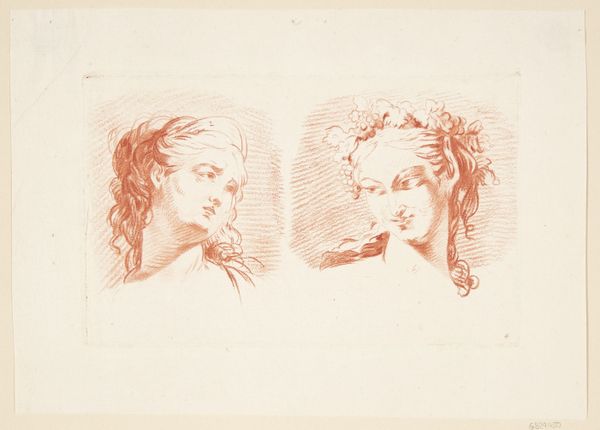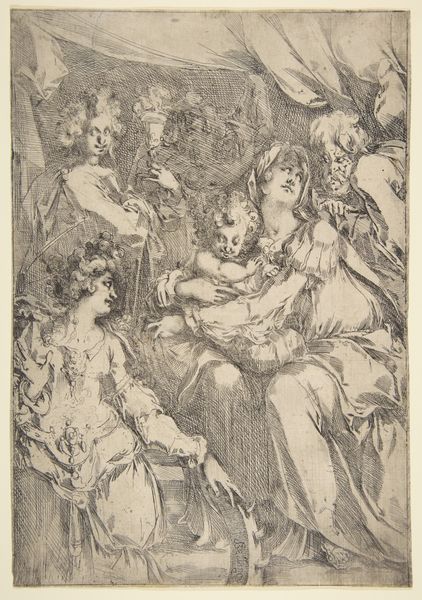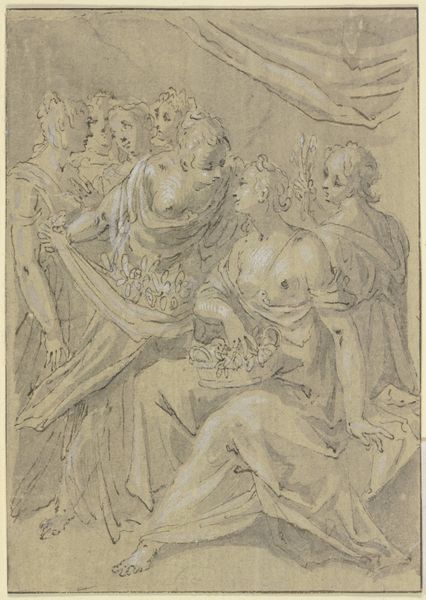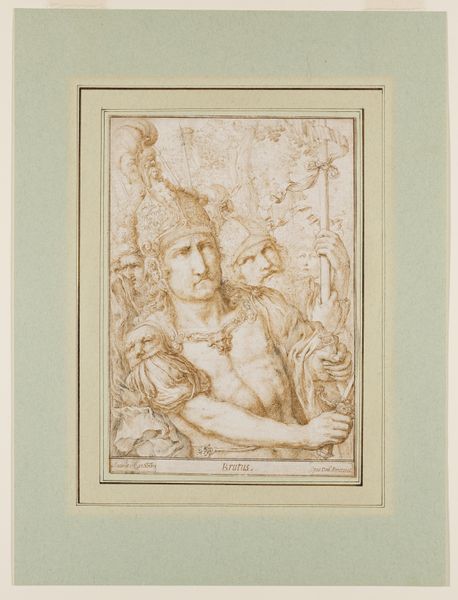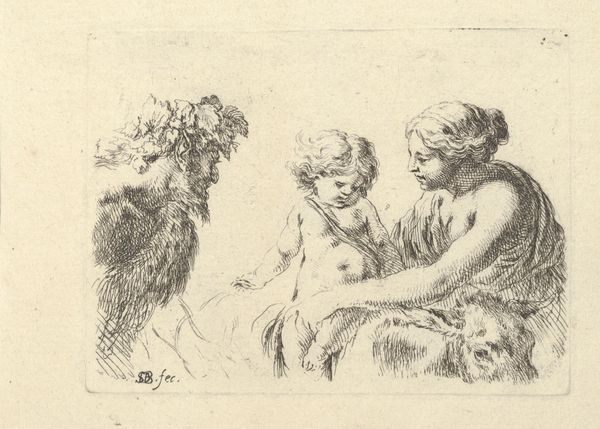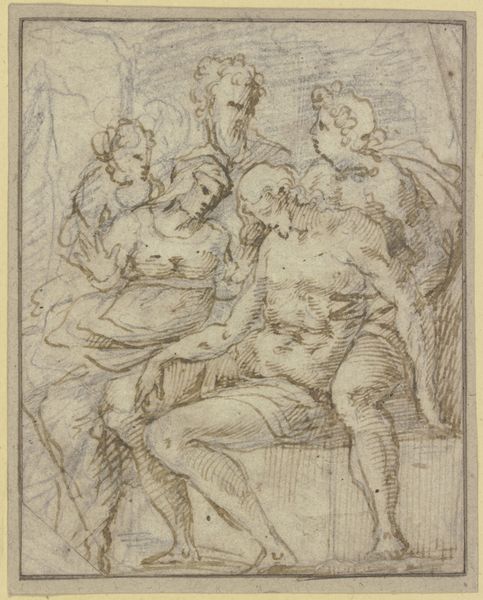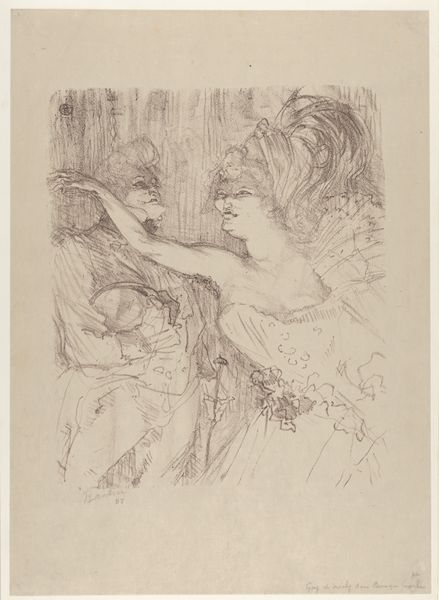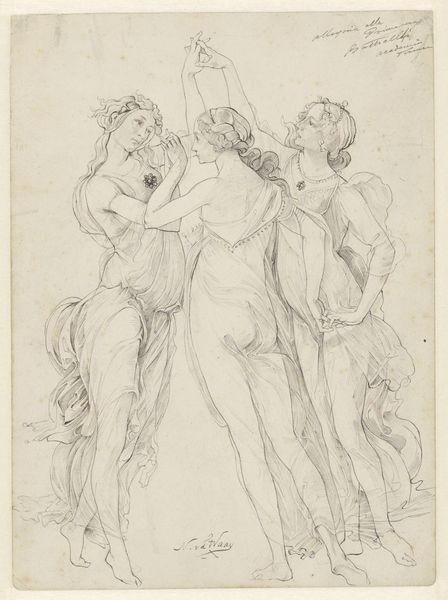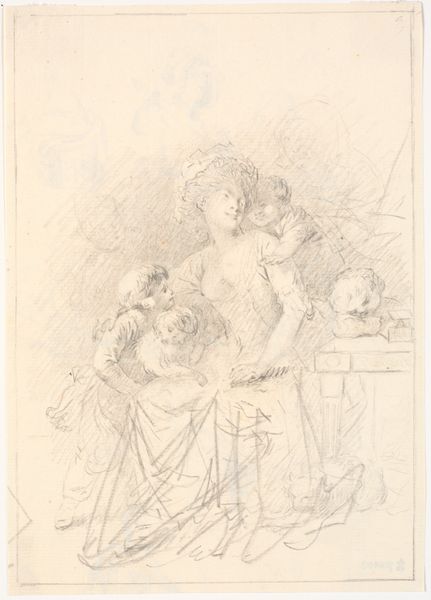
Studies for the heads of three satyrs, an old man and two women 1525 - 1575
0:00
0:00
drawing, paper, ink
#
portrait
#
drawing
#
figuration
#
paper
#
11_renaissance
#
ink
#
history-painting
#
academic-art
#
italian-renaissance
Dimensions: 204 mm (height) x 204 mm (width) (bladmaal)
Editor: So, this drawing is called "Studies for the heads of three satyrs, an old man and two women," likely from somewhere between 1525 and 1575. It's ink on paper, and seeing all these heads crammed together gives me this sense of theatricality, almost like a cast of characters preparing for a play. What do you see in this work? Curator: What strikes me is the contrast between the satyrs and the women. We have these wild, almost grotesque figures juxtaposed with what appears to be idealized beauty. It brings up interesting questions about how the Renaissance was defining and reinforcing gendered stereotypes through art. How do you think these images contributed to social power structures? Editor: That's a good point! I hadn’t thought about the power dynamics at play. It's easy to get lost in the technical skill and forget to consider the social context. Were satyrs always depicted so… intensely? Curator: The Renaissance often reinterpreted classical figures like satyrs through a Christian lens, often associating them with untamed desires and the baser instincts of humanity. By pairing these figures with serene, classically idealized women, the artwork might be making an implicit comment on the perceived differences, and perhaps even conflicts, between male and female nature, but were those interpretations shared universally? Editor: I guess I see that tension now. The artist isn't just showing us faces; they're presenting different facets of humanity as they understood it, likely shaped by biases and societal expectations. Curator: Precisely. The beauty of art, even preliminary sketches like these, lies in its ability to reflect and, perhaps unintentionally, critique the social and political landscape of its time. What this drawing reveals, beyond technique, are ingrained ideas about identity. Editor: It's fascinating to consider this piece as more than just a study of form, but as a record of cultural attitudes. Curator: Indeed, a glimpse into the complex interplay between art, gender, and power in Renaissance society.
Comments
No comments
Be the first to comment and join the conversation on the ultimate creative platform.

